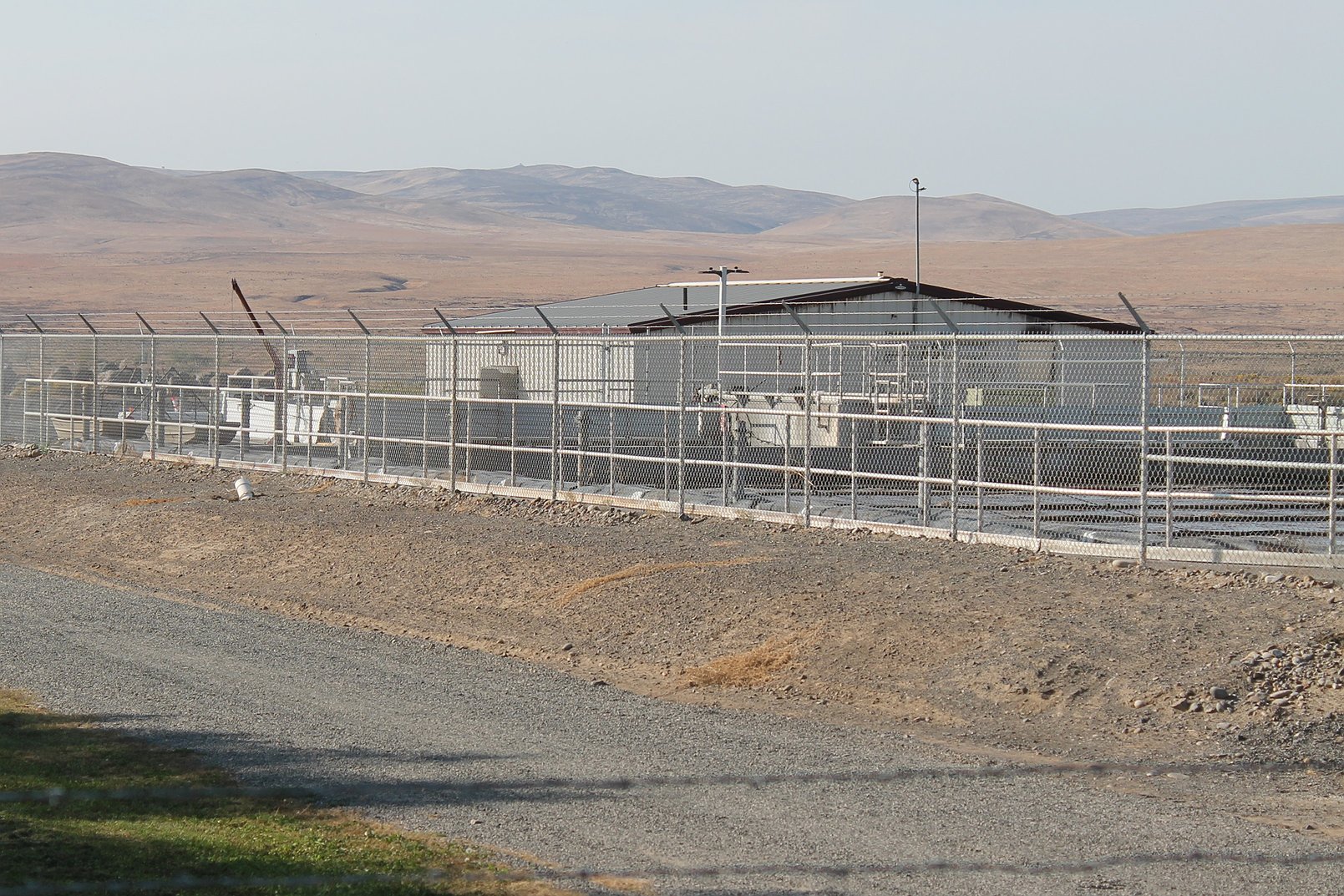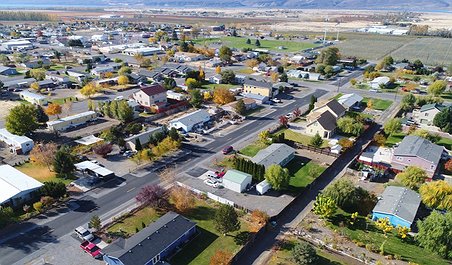Mattawa receives water system funding, discusses ongoing projects
GABRIEL DAVIS | Hagadone News Network | UPDATED 11 months AGO
Gabriel Davis is a resident of Othello who enjoys the connections with his sources. Davis is a graduate of Northwest Nazarene University where he studied English and creative writing. During his free time, he enjoys reading, TV, movies and games – anything with a good story, though he has a preference for science fiction and crime. He covers the communities on the south end of Grant County and in Adams County. | February 20, 2024 4:34 PM
MATTAWA — Gray & Osborne Civil Engineer Jamin Ankney presented to the Mattawa City Council on Thursday regarding funding the city received for two water system projects, with the council also approving two design contracts with Gray & Osborne.
Mayor Maria Celaya introduced the first funding award, through the Drinking Water State Revolving Fund.
“We have $7.2 million,” she said. “We don't know how much of it's a loan and how much of it is a grant.”
“You will get some grant (money). They just don't know exactly how much yet. It sounds like it'll be a good funding package,” Ankney said.
Ankney said that funding will be used for multiple well and water system improvements.
The council also discussed a contract with Gray & Osborne for the city’s Sewer System Improvement Design. The design will eliminate the Portage Avenue Lift Station and replace it with a system in a different location that makes better use of gravity to reduce overflows and make the wastewater system more efficient. The contract states the estimated cost for the project design is about $207,000.
Celaya elaborated on the funding the city has received for that project.
“The Public Works Board, we had a meeting last week, and that was for the Portage lift station. They've expanded our grant amount to $2.1 million, and that's reduced the loan amount to $381,000.”
Celaya said the city needs to decide soon whether to take the loan and what repayment plan.
The wastewater additions would run through a significant amount of private land, which will require easements to continue with the project, Ankney said. He also said putting the sewer in may open new land for development in Mattawa.
“We don’t anticipate that the easements will be difficult — they’ll increase the property value for those farm parcels as this will make them easier to develop — but it does take time to get the easements and for the city to get the signatures on the easements,” Ankney said.
The council unanimously approved both contracts with Gray & Osborne to continue with the water capacity analysis and the lift station elimination project.
The city also recently submitted its water system plan to the Washington State Department of Health, Ankney said.
“The good news was they approved your water system plan,” Ankney said. “The downside was that they gave you some more restrictive connection limits than you were anticipating. We've had multiple meetings with them, meeting at City Hall, another another follow-up Zoom meeting to discuss it with them and try to argue the city's case. Ultimately, they're saying the path forward for the city is to perform a capacity analysis to add your 2023 water use into the previous water and use that to demonstrate the capacity for more connections.”
Ankney said the capacity analysis is fairly straightforward and won’t take long to perform. The contract estimates a cost of $21,000, which Gray & Osborne cannot exceed without written approval.
“They basically took all of your connections,” Ankney said. “Obviously there are multiple ongoing developments, so the goal is to do this capacity analysis and justify enough connections so that all the existing growth can continue to occur. And by next year, you'll have well 2 online and then you'll have lots of growth.”
The city should end up with enough capacity to allow in-progress housing developments to continue, Ankney said.
“We have some of the data already … we've already looked at it,” Ankney said. “The 2023 data makes your case better, not worse, so adding that data should justify a few additional connections … By the time they're actually ready to physically connect to a house, they should all be dealt with.”
Gabriel Davis may be reached at gdavis@columbiabasinherald.com. Download the Columbia Basin Herald app on iOS and Android.
ARTICLES BY GABRIEL DAVIS

Work-based learning lets students build their own futures
MOSES LAKE — Work-based learning provides education opportunities for the workforce to receive hands-on training and technical education and prepare themselves to enter various industries. Educators and workforce development professionals from Eastern Washington discussed some the training they offer and the benefits of their programs. Next Generation Zone, an affiliate of WorkSource based in Spokane, provides job training opportunities for youth and young adults ages 16 to 24. Program Coordinator Kate Martin said there are multiple benefits to the program. “One of them is a paid work experience, and that’s where we reach out to area employers who are willing to take a young person and train them,” she said. “This is a short-term learning experience, so it’s typically about 240 hours; sometimes it could be longer or shorter. We’re the actual employer; we cover all of their wages, taxes, the L&I, and the employer just agrees to give them the experience and train them in whatever field it is that they’re wanting to go into.”

Serving schools: ESD superintendents reflect on operations, priorities
MOSES LAKE — Educational service districts are government-mandated agencies put in place to provide services to school districts across the state. ESD Superintendents discussed what they do and their priorities in operating their districts. ESD 105, led by Superintendent Kevin Chase, serves four counties, including Kittitas, Yakima and portions of Klickitat and Grant counties and provides support for 25 school districts – including Royal School District and Wahluke School District – and more than 66,000 students. “We help them collaborate with each other as well or collaborate with other partners,” Chase said. “(It’s) a lot of advocacy work, either regionally or across the state, or even federally, working on different issues that impact our education. And we provide very specialized services in certain situations in order to meet the needs of our students in our region and of our school districts.”

Columbia Basin Project making headway through Odessa Groundwater program
CASHMERE — The Columbia Basin Project is making gradual progress toward completion with particularly significant accomplishments for the Odessa Groundwater Replacement Program in the last six months or so, according to Columbia Basin Development League Executive Director Sara Higgins. “When we’re dealing with a project of this size, advancement is kind of like watching paint dry, but yes, there have been (developments),” she said. “There are a lot of exciting things happening right now.” There are more than 300 miles of main canals, about 2,000 miles of lateral canals and 3,500 miles of drains and wasteways in the irrigation project, according to the U.S. Bureau of Reclamation website. The CBDL advocates for the operation of those waterways and for the project to continue “build-out.”








